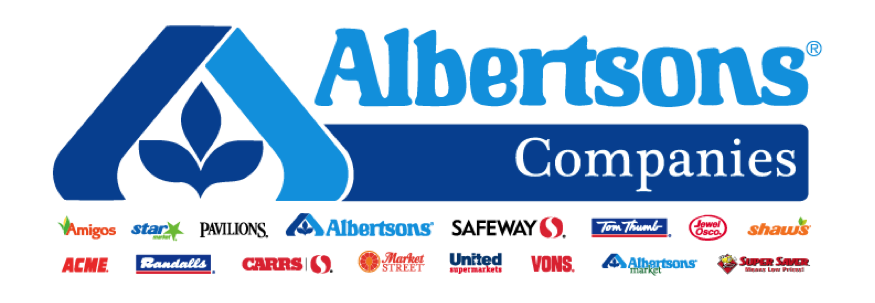Title Page
-
Site conducted
-
Driver Name
-
Conducted on
-
Assessor Name:
-
Location
General Details
DRIVER EVALUATION LOG TRUCK
-
Driver Name:
-
Number:
-
Classes:
-
Driver’s licence sighted
-
Expiry date:
VEHICLE DETAILS:
-
DL number:
-
Reg expiry date:
-
COF expiry date:
-
50MAX permit
-
HPMV sighted
-
Emergency nos:
-
50MAX current
-
TSL sighted:
-
Truck Manual
EVALUATION DETAILS
-
Date:
-
Weather:
-
Time:
-
Forest:
-
Port:
-
Assessor Name:
MATRIX
-
Green - Overall skill and / or knowledge demonstrated consistently in all assessment conditions and with little or no potential for risk or loss
Amber - Overall skill and / or knowledge demonstrated but consistency yet to be achieved to maximise operational efficiencies
Red - Overall skill and / or knowledge not demonstrated to a satisfactory standard a loss and / or potential exists.
The evaluation recognises performance by an individual driver, and identifies, for the company, potential loss and / or risk factors which are colour coded as above.
To achieve the required standard for a “standard met” outcome there must be no red sections present in the report
Where there are multiple Amber boxes in one section, the trainer / assessor must decide if the issues are critical for a “standard not met” outcome.
1. PPE INSPECTION
-
1.1 Night / Day hi viz shirt
-
1.2 Safety boots
-
1.3 Safety glasses
-
1.4 Gloves
-
1.5 Helmet (check date of issue & condition)
-
1.6 Shovel
-
1.7 Broom for clearing bark
-
1.8 Shovel
-
1.9 Fire extinguisher (check inspection date)
-
1.6 First aid kit
-
1.7 Radio in good working order
2. VEHICLE INSPECTION, START-UP AND SHUT-DOWN
-
2.1 Checks fuel, oil, coolant and other appropriate fluid levels
-
2.2 Starts engine according to manufacturer’s recommendations
-
2.3 Windscreen, wipers, washers are checked
-
2.4 Lights and indicators are checked
-
2.5 Tyres checked for inflation and damage (including trailer if up)
-
2.6 Visual check of wheel nuts (including trailer if up)
-
2.7 Check trailer couplings and connections (if applicable)
-
2.8 Check load security (if loaded) or trailer securing chains are attached
-
2.9 Vehicle is parked safely with neutral selected and park brake applied
-
2.10 Engine run down period appropriate prior to shutdown
-
2.11 Driver dismounts vehicle in a safe manner (3 points of contact)
-
2.12 Daily check list is completed
3. CLUTCH, TRANSMISSION, DRIVELINE
-
3.1 Does not double clutch a synchromesh transmission
-
3.2 Double clutches with a non-synchromesh transmission
-
3.3 Suitable gear selected to move off
-
3.4 Unrushed shifting style demonstrated
-
3.5 Correct gear selected before commencing decent and or correct gear selected safely during decent
-
3.6 Avoids unnecessary downshifting prior to stopping
-
3.7 Range change / splitter buttons used correctly
-
3.8 Traction control systems and Central Tyre Inflation (CTI) systems used according to manufacturer’s recommendations
-
3.9 Differential locks engaged according to manufacture’s recommendations and before vehicle loses traction
3 AUTOMATED TRANSMISSION
-
3.1 Automated transmissions used in accordance with manufacturer’s recommendations
-
3.2 “Manual” mode of automated transmission used in off-highway driving
-
3.3 Traction control systems and Central Tyre Inflation (CTI) systems used according to manufacturer’s recommendations
-
3.4 Differential locks engaged according to manufacture’s recommendations and before vehicle loses traction
4. FUEL ECONOMY
-
4.1 Maintains engine rpm in recommended ranges during hill climbs
-
4.2 Maintains engine rpm in recommended ranges during city / urban driving
-
4.3 Avoids excessive vehicle speeds
-
4.4 “Reads the Road” to ensure correct speeds and gear selections are maintained
5. BRAKING, STEERING, VEHICLE CONTROL
-
5.1 Smooth progressive braking used in general driving
-
5.2 Brakes used correctly during descents to compliment transmission and auxiliary brake.
-
5.3 Park brake always applied when driver leaves cab of vehicle
-
5.4 Auxiliary brake is used in manufacturer’s rev range during steep descents
-
5.5 Auxiliary brakes not used in urban / city / residential areas or where they are prohibited
-
5.6 Smooth progressive style of steering used in all situations
-
5.7 Vehicle speeds are appropriate at all times for the driving conditions and vehicle configuration
6. OBSERVATION, DRIVER COURTEOUSY
-
6.1 Identifies all potential hazards early and reacts in an appropriate manner
-
6.2 Meets all obligations in regard to road signs and markings
-
6.3 Applies correct following distances
-
6.4 Makes adequate use of rear vision mirrors in all driving conditions
-
6.5 Overtaking manoeuvres are conducted safely with regard to other road users
-
6.6 Takes steps to allow following traffic past when safe to do so
-
6.7 Demonstrates courtesy toward other road users
-
6.8 Cell phone and communication equipment used safely and at appropriate times
7. INTERSECTIONS, CORNERS, ROUNDABOUTS, LANE USE
-
7.1 Vehicle is driven within lane (does not cut corners)
-
7.2 Keeps left, where appropriate, on multiple laned roads
-
7.3 All intersection and lane markings and signs are observed
-
7.4 Give way rule is applied correctly at intersections and roundabouts
-
7.5 Demonstrates ability to anticipate traffic lights and traffic flow
-
7.6 Speeds are appropriate for the vehicle and driving conditions and would allow driver to stop safely in an emergency
-
7.7 Determines safe cornering speeds through use of advisory signs and with consideration to driving and vehicle conditions
-
7.8 Correct cornering technique is used
-
7.9 Correct cornering line is used
8. OFF HIGHWAY DRIVING
-
8.1 Transition from seal to unseal road is smooth
-
8.2 Uses correct lines appropriate to road conditions
-
8.3 Minimises the effect of road camber whenascending grades
-
8.4 Speed appropriate for road conditions and vehicle configuration with forest owner speed not exceeded
-
8.5 All passing manoeuvers completely safe
-
8.6 Good R.T. communication at every marker
9. REVERSING, MANOEUVRING
-
9.1 Checks confined manoeuvring areas by foot, if necessary, and identifies all potential hazards
-
9.2 Selects suitable low gear for manoeuvre
-
9.3 Remains seated and makes effective use of rear view mirrors
-
9.4 All reversing and low speed manoeuvring completed safely.
10. LEGAL COMPLIANCE
-
10.1 Logbook completed and “work time rule” complied with
-
10.2 Seatbelts , where fitted, are used
-
10.3 Headlights switched on (100m visibility)
-
10.4 Indicators used to signal intent to turn, change direction, change lanes, merge, overtake or pull over.
-
10.5 Load is secured as per LTSC legal requirements
-
10.6 Permits etc from first page
11. COUPLING, UNCOUPLING, TRAILER UP
COUPLING
-
11.1 Trailer securing chains are undone prior to lifting trailer
-
11.2 Trailer is lifted safely clear from truck
-
11.3 Checks that “ring feeder” jaws are open and drawbar on trailer is at the correct height
-
11.4 Trailer hooked up safely
-
11.5 Conducts visual check to ensure pin is down, jaws are closed and locked
-
11.6 Secures drawbar stand and connectd all air and electrical lines and hoses
UNCOUPLING
-
11.7 Trailer positioned correctly for lifting onto truck
-
11.8 Applies park brake
-
11.9 Disconnects and secures all air and electrical lines
-
11.10 Lowers drawbar stand
-
11.11 Disconnects coupling
-
11.12 Trailer lifted and placed onto back of truck safely and correctly
-
11.13 Trailer securing chains positioned correctly
-
11.14 Lifting equipment restored to starting position (Gantry operation)
12. LOADING
LOADING
-
12.1 Stops at sign or site entry
-
12.2 Enters site when requested by loader operator
-
12.3 Turns and positions vehicle correctly for loading
-
12.4 Unloads and connects trailer (as per section10)
-
12.5 Unit configured correctly and safely with brakes set accordingly for onboard scales
-
12.6 Stays in vehicle while loading
-
12.7 Loads according to LTSC guidelines
-
12.8 Checks load before moving vehicle (dimensions, weight & crowning)
-
12.9 Moves vehicle no more than 100 meters to secure load
-
12.10 Secures load in accordance with LTSC / forest owner standards
-
12.11 Wears correct PPE at all times
-
12.12 Vehicle cleaned off before leaving site
-
12.13 Radio call before leaving site (where applicable)
-
12.14 Stops and checks load / vehicle before entering public highway
13. UNLOADING
-
13.1 Load is weighed at the appropriate facility
-
13.2 Stops at sign or site entry
-
13.3 Removes chains in unchaining area
-
13.4 Enters unloading site when requested by loader operator
-
13.5 Positions vehicle safely and correctly for unloading
-
13.6 Remains in safe zone while unloading
-
13.7 Vehicle readied for “trailer lift” (bolsters re-positioned folded etc)
-
13.8 Trailer positioned on back of trailer safely (as per section 10)
-
13.9 Wears correct PPE at all times
-
13.10 Follows site rules
-
13.11 Vehicle tared out (where applicable)
-
13.12 Exits site safely
Discussed by assessor and driver:
-
General Summary
-
Assessor
-
Driver











